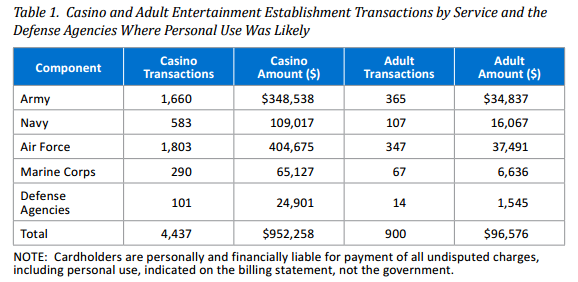US Army committed $6.5 trillion in accounting fraud in one year by Cory Doctorow.
From the post:
In June, the Defense Department’s Inspector General released a report on the US Army’s accounting, revealing that the Army had invented $6.5 trillion in “improper adjustments” ($2.8T in one quarter!) to make its books appear balanced though it could not account for where the funds had gone.
…
If you are interested in transparent and trackable information systems, that’s a headline that captures your attention!
Except that when you run it back to the original story, U.S. Army fudged its accounts by trillions of dollars, auditor finds by Scot J. Paltrow, which reads in part:
The United States Army’s finances are so jumbled it had to make trillions of dollars of improper accounting adjustments to create an illusion that its books are balanced.
The Defense Department’s Inspector General, in a June report, said the Army made $2.8 trillion in wrongful adjustments to accounting entries in one quarter alone in 2015, and $6.5 trillion for the year. Yet the Army lacked receipts and invoices to support those numbers or simply made them up.
…
You won’t find a reference to the “June report,” as cited by Paltrow. No link, no title, no nothing.
In fact, there is no such June report.
If you look carefully enough at the Inspector General site for the DoD you will find:
07-26-2016
Financial Management
Army General Fund Adjustments Not Adequately Documented or Supported (Project No. D2015-D000FL-0243.000)
DODIG-2016-113
The webpage for that July report, reads in part:
Finding
The Office of the Assistant Secretary of the Army (Financial Management & Comptroller) (OASA[FM&C]) and the Defense Finance and Accounting Service Indianapolis (DFAS Indianapolis) did not adequately support $2.8 trillion in third quarter journal voucher (JV) adjustments and $6.5 trillion in yearend JV adjustments1 made to AGF data during FY 2015 financial statement compilation.2 The unsupported JV adjustments occurred because OASA(FM&C) and DFAS Indianapolis did not prioritize correcting the system deficiencies that caused errors resulting in JV adjustments, and did not provide sufficient guidance for supporting system‑generated adjustments.
In addition, DFAS Indianapolis did not document or support why the Defense Departmental Reporting System‑Budgetary (DDRS-B), a budgetary reporting system, removed at least 16,513 of 1.3 million records during third quarter FY 2015. This occurred because DFAS Indianapolis did not have detailed documentation describing the DDRS-B import process or have accurate or complete system reports.
As a result, the data used to prepare the FY 2015 AGF third quarter and yearend financial statements were unreliable and lacked an adequate audit trail. Furthermore, DoD and Army managers could not rely on the data in their accounting systems when making management and resource decisions. Until the Army and DFAS Indianapolis correct these control deficiencies, there is considerable risk that AGF financial statements will be materially misstated and the Army will not achieve audit readiness by the congressionally mandated deadline of September 30, 2017.
…
Everybody makes mistakes. I’m sure I make several everyday without hardly trying.
However, if you link to original sources, readers stand some chance of discovering and correcting those errors.
If you cite a resource, link to the resource.
PS: Before you use the word “fraud” with regard to military accounting systems, realize financial accounting is not a primary or even secondary concern of a military force. There are possible solutions to military accounting issues but congressional tantrums, a/k/a mandates, aren’t among them.

